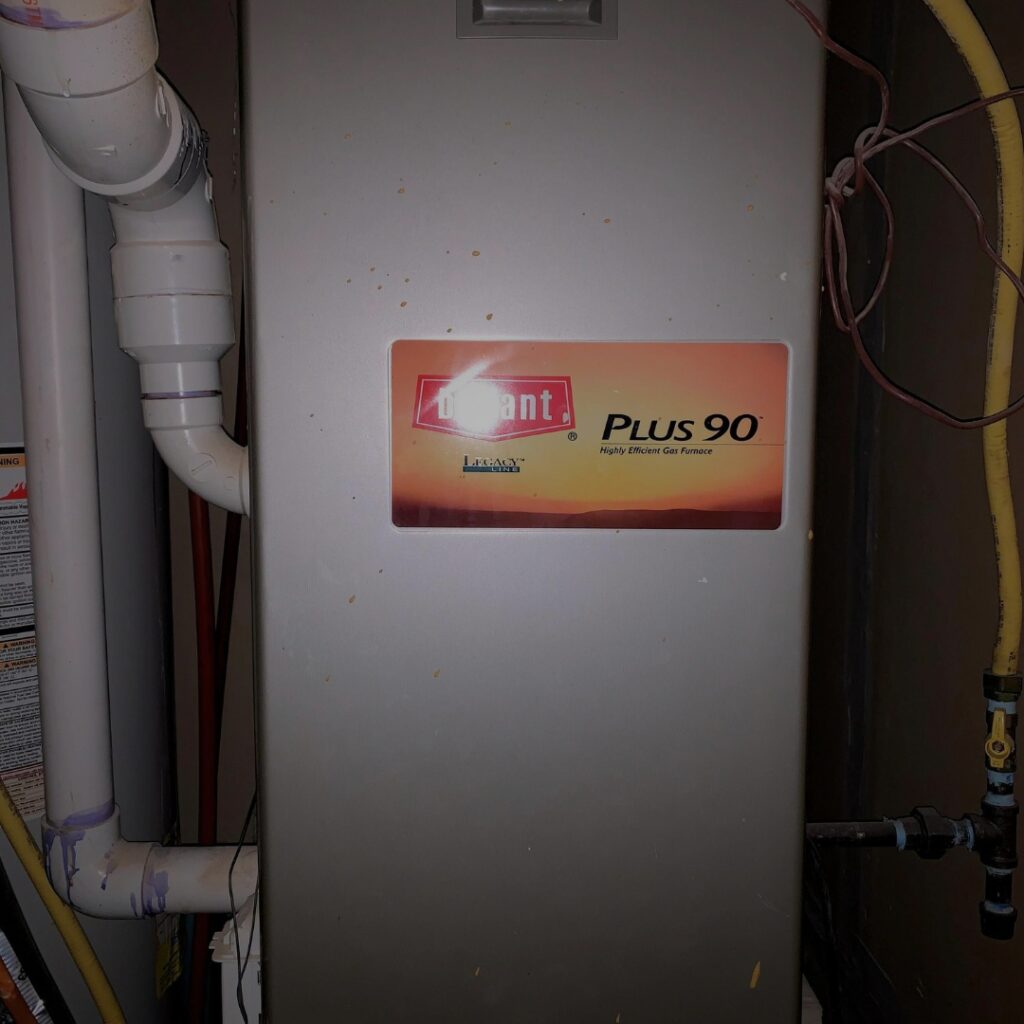If you own a Bryant Plus 90 furnace, you know it’s a fantastic beast when running smoothly. But even the best household heroes need a little help sometimes. Are you ready to become an expert troubleshooter of your Bryant furnace? Let’s dive in!
The Bryant Plus 90 furnace is known for its efficiency and reliability. But what makes it tick? Well, it boasts a high-efficiency rating, comfortable heating, and quiet operation.
First off, the Bryant furnaces takes efficiency seriously. With an impressive high-efficiency rating, this furnace doesn’t just keep you warm; it does so smartly, maximizing heat output from every energy dollar you spend. It’s like having a furnace that’s also a savvy money manager, ensuring you get the most bang for your buck.

Comfortable heating is another hallmark of the Bryant Plus 90. This isn’t just about temperature—though, of course, that’s crucial. It’s also about how this furnace delivers heat. Thanks to its advanced technology, the Bryant Plus 90 maintains a more consistent, even temperature throughout your home, banishing those pesky cold spots.
However, even with all these fantastic features, the Bryant Plus 90, like any piece of sophisticated machinery, requires care and sometimes a bit of troubleshooting. To keep things running smoothly, you need to understand its needs, listen to it (sometimes literally, in the case of strange noises), and give it some TLC now and then.
Grasping the essentials of your HVAC system is the cornerstone of effective troubleshooting. It’s about knowing what’s normal, what’s not, and when to intervene. Ready to delve deeper into keeping your home’s heating system running effectively? Let’s start on this Bryant Plus 90 furnace troubleshooting!
Bryant Plus 90 Common Issues and Troubleshooting
Here’s a roundup of usual suspects that could be plaguing your Bryant Plus 90, paired with some handy self-help solutions.
Not Producing Heat
There’s nothing worse than expecting a wave of warmth and getting a gust of cold instead. If your Bryant Plus 90 is giving you the silent cold shoulder, here’s what you should do:
- Check the Thermostat: That little box on the wall is the brains of the operation. First, make sure it’s set to “heat” – it’s so simple but sometimes overlooked! If it’s already set, try hiking up the temp to see if it provokes a response. No reaction? You might be dealing with a thermostat mutiny, requiring either a new set of batteries or a complete replacement.
- Check the Circuit Breaker: Head to your home’s circuit breaker panel – it’s time for a bit of detective work. Find the switch that corresponds to your furnace. Is it in the right place? If it’s tripped, you’ve probably found your culprit. Flip it off and on again to reset it. If it trips again, though, you might have an electrical issue on your hands that needs professional attention.
Inconsistent Heating
A furnace that plays favorites with which rooms it heats is frustrating. If you’re dealing with an inconsistent flow of warmth, consider these steps:
- Filter Replacement: If you’re hearing this advice again, it’s because it’s crucial: check those filters! A dirty filter is the arch-nemesis of airflow. It makes your furnace work overtime and underperform. Make sure you replace the furnace filter regularly – it’s like giving your furnace a breath of fresh air!
- Air Vent Inspection: Do a tour of your place and take a good look at each air vent. Are they open? Is something blocking them, like furniture or curtains? They need to be clear to invite that warmth into each room. Freeing these up can evenly distribute heat across your domain.
Strange Noises
If your furnace is producing a symphony of strange sounds, it’s trying to tell you something. Here’s how to decode those noises:
- Sound Identification: Different noises can mean different things. A ‘bang’ could point to an issue with the ignition, while a ‘whine’ might mean a loose belt or a bearing problem. By identifying the specific sound, you’re one step closer to understanding the issue.
- Blower Motor Maintenance: This part can be the source of many strange sounds. Regular lubrication should be part of your furnace care routine. If you’ve been neglecting this, get started! A little bit of lubricant can make for a lot more peace and quiet.
Frequent Cycling
Does your furnace seem indecisive, turning on and off too often? Frequent cycling can be a symptom of a couple of different issues:
- Check the Filter: Yes, it’s the filters… again! If they’re clogged, they’re choking your furnace’s airflow, causing it to start and stop frequently. Give your system some relief with a fresh filter.
- Heat Anticipator Adjustment: Inside your thermostat, there’s a tiny device called a heat anticipator. It’s as futuristic as it sounds! It tells your furnace when to turn on and off, so if it’s not adjusted correctly, it can lead to rapid cycling. You might need to tinker with it a little—just a small adjustment can make a world of difference in achieving that steady, cozy heat.
Bryant Furnace Error Codes
Navigating the world of Bryant furnace troubleshooting can feel like learning a new language. But, thankfully, Bryant makes this task a bit easier with a system of error codes that communicate exactly what’s ailing your furnace. These codes, indicated by a series of flashing LED lights on the unit, are akin to the furnace “speaking” to you.
Here’s how to decipher those blinks: short flashes represent the first digit of a two-digit error code, and long flashes represent the second digit. This pattern serves as a critical first clue in your troubleshooting detective work.
Some common Bryant furnace error codes:
- Error Codes 12 and 44: These codes suggest a hiccup with the blower calibration. This delicate process ensures your blower is working correctly and might require professional recalibration.
- Error Code 13: This indicates an issue with the limit switch, which has likely tripped due to overheating. The furnace should auto-reset after three hours, but recurrent trips suggest a deeper issue.
- Error Code 14: Here, the problem lies with the ignition, possibly due to a faulty igniter or gas supply issues. The control will attempt an auto-reset after three hours.
- Error Code 23: This code implies an issue with selecting the proper blower airflow, impacting the furnace’s efficiency and performance.
- Error Code 34: The furnace is experiencing difficulties with the ignition process, meaning the sequence that initiates the furnace burners isn’t functioning correctly.
- Error Code 41: The blower isn’t hitting the necessary RPMs, which could affect the furnace’s ability to circulate heated air through your home.
- Error Code 43: A fault with the pressure switch calibration signals that the safety switch designed to ensure proper venting and combustion air isn’t properly calibrated.
- Error Code 45: This code indicates a lockout due to issues with the control circuitry. The system will auto-reset after an hour, but recurrent issues might necessitate expert intervention.
Understanding these error codes can significantly simplify your troubleshooting process, giving you a clear direction for your investigation or what to inform a technician. However, remember that while identifying the problem is a solid start, some issues, especially those involving electrical components or gas supply, should be handled by a professional to ensure safety and efficiency.
When to Seek Professional Help
“Okay, I’ve tried all that,” you say, “but it’s still not quite right.” That’s okay!
Some issues are more complex – they need an expert technician to handle them. If you’ve tackled the easy fixes, but your furnace is still rebelling, it’s time to call in the pros.
Persistent problems, safety concerns, or just an intuition that something’s off are all valid reasons to get a professional on the case.
Preventative Measures and Maintenance
Now, we’re about more than just quick fixes here. We’re in it for the long haul! Regular maintenance is like the secret sauce for a trouble-free furnace life.
Schedule annual service from a certified HVAC technician! They’ll do a thorough inspection and tune-up. And remember, a clean furnace is a happy furnace – so replace those filters regularly!
Also, consider investing in a carbon monoxide detector for your home. It’s like an insurance policy for peace of mind. These small things can warn you of issues before they become dangerous, keeping you and your furnace humming along harmoniously.
Conclusion
Our journey through the Bryant Plus 90 furnace troubleshooting shows that a little knowledge can be a powerful thing! Keeping our units healthy means consistent warmth and reassurance for you. Remember, regular maintenance and care for your Bryant Plus 90 will ensure it returns the favor!






